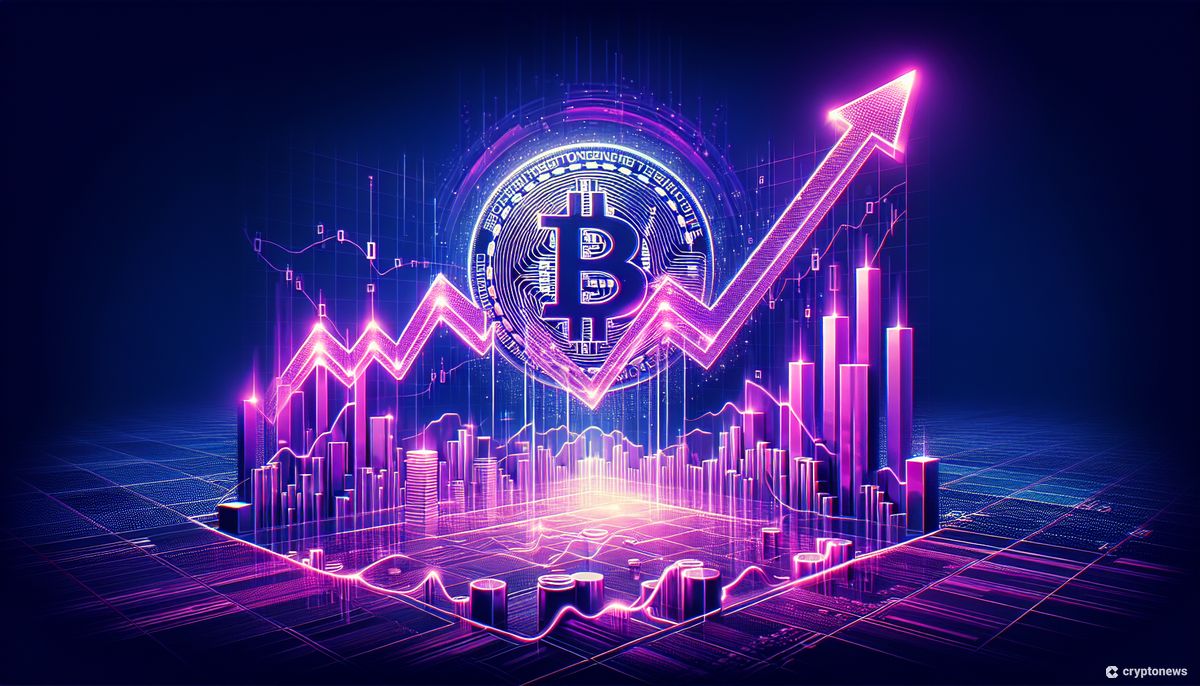Stablecoin Symbiosis with crypto, Mark Goodwin’s Bitcoin to USD Exploration
Exploring the Symbiosis between Stablecoins and Crypto Mark Goodwin's Journey from Bitcoin to USDUnderstanding Stablecoins
Stablecoins are a type of cryptocurrency designed to maintain a stable value by being pegged to another asset, such as a fiat currency, precious metal, or a basket of assets. In recent years, stablecoins have gained widespread popularity for their potential to address some of the limitations of traditional cryptocurrencies like Bitcoin. While Bitcoin is known for its price volatility, stablecoins provide a more stable price alternative, making them suitable for various use cases.
One of the most prominent marketing features of stablecoins is their ability to bridge the gap between traditional finance and digital assets. By pegging their value to stable assets, stablecoins offer a reliable medium of exchange and store of value. This stability makes stablecoins more appealing to merchants and consumers as they can transact with confidence without worrying about sudden price fluctuations.
In theory, stablecoins also offer advantages in terms of transaction speed and cost efficiency. Cross-border transactions in traditional banking systems often involve lengthy settlement times and high fees. In contrast, stablecoins can facilitate near-instantaneous transactions at lower costs, making them an attractive choice for global commerce.
Additionally, in countries with economic instability or volatile fiat currencies, stablecoins can serve as a hedge against inflation. By holding stablecoins backed by stronger currencies, individuals and businesses can protect their wealth from devaluation and maintain more stable financial conditions.
- Checking the latest progress of 13 spot Bitcoin ETF proposals
- LianGuai Morning News | Bitcoin’s rise in 2023 is divided into five stages, and the virtual asset industry faces many risks and has a high demand for insurance.
- HODLers Strike While the Crypto Iron is Hot!
It is worth noting that stablecoins come in different types, each with its own mechanisms for maintaining stability. Some stablecoins are backed by reserves of pegged assets, while others rely on algorithms and smart contracts to regulate supply and demand.
The Concept of Bitcoin-Dollar
Bitcoin provides a politically neutral platform and asset, but it comes with the cost of high volatility in terms of price and purchasing power. On the other hand, stablecoins offer a platform and asset that is ultimately centralized and controlled, gaining the benefits of price and purchasing power stability. These two technologies represent the two sides of the same coin to some extent: the yin and yang. Furthermore, the largest Bitcoin market in the world is in dollars. Globally, if people attempt to determine the price of Bitcoin, they are most likely to look at its price in dollars. These markets are also likely to trade in stablecoins rather than transact in dollars outside of US jurisdiction.
Thus, this creates a symbiotic relationship between the two. Wherever Bitcoin goes, the dollar is to some extent following. The dollar price of Bitcoin, as well as the frequent use of stablecoins, follows the development of Bitcoin. This dynamic reality ensures that Bitcoin is likely to be adopted anywhere due to local currency and economic instability, and dollar-based stablecoins are likely to be adopted to some extent.
Given this dynamic, the growth Bitcoin is experiencing could actually help promote the growth and stability of the US dollar in the process. If the increasing popularity of Bitcoin leads to the increasing popularity of stablecoins, which in turn require holding US dollars or dollar-equivalent assets like government bonds to support them, then the narrative of Bitcoin usurping and weakening the dollar may ultimately prove hollow. At least in the foreseeable future.
Mark Goodwin’s Perspective on Stablecoins
Who is Mark Goodwin?
Mark Goodwin is the author of the book “Bitcoin vs. Dollar” and a Bitcoin expert, as well as an advocate for decentralized financial systems. With his extensive industry experience, Goodwin provides valuable insights into the stablecoin world and its potential impact on the financial ecosystem.
Goodwin’s Critique of Stablecoins
Goodwin’s critique of stablecoins stems from concerns about centralization and the possibility of abuse or manipulation. While stablecoins aim to provide stability, reliance on trusted custodians and centralized reserves brings counterparty risks. Goodwin suggests that Bitcoin enthusiasts should exercise extreme caution and concern due to stablecoin issuers heavily buying US government bonds, which sustains the US Treasury market.
Risks Associated with Stablecoins
Concerns about Price Stability
While stablecoins attempt to maintain a stable value, risks still exist in maintaining ties to underlying assets. Factors such as market conditions, liquidity differences, and redemption pressures may challenge the stability of stablecoins. If these risks are not adequately managed, they could lead to deviations from the peg and potential loss of user trust.
Regulatory Challenges
The regulatory environment surrounding stablecoins is still evolving, posing challenges to their widespread adoption. Regulatory bodies worldwide are closely monitoring stablecoins, considering their potential impact on financial stability and consumer protection. Effectively addressing these regulatory challenges is crucial for ensuring long-term success for stablecoin projects.
Potential for Market Manipulation
Stablecoins have significant market capitalization and liquidity, making them potential targets for market manipulation. The rapid expansion in the cryptocurrency space, coupled with limited regulation, creates opportunities for individuals or entities to manipulate the stablecoin market for personal gain. Enhancing transparency and regulatory frameworks help mitigate these risks and ensure market integrity.
Stablecoins aim to provide stability and accessibility in the decentralized financial sector. However, they also bring risks and challenges that need to be carefully addressed. As the market evolves and regulatory frameworks develop, stablecoins have the potential to further drive the influence of the US dollar globally, so the associated risks of further concentration of the global economy in the hands of a few private capital creators must be taken into consideration.
We will continue to update Blocking; if you have any questions or suggestions, please contact us!
Was this article helpful?
93 out of 132 found this helpful
Related articles
- The Future of Institutional Investment Meanwhile Group, Affiliated with Sam Altman, Unveils Bitcoin Private Credit Fund
- The Crypto Roller Coaster: Bitcoin’s Rise and InQubeta’s Thrills
- Phoenix Group Pounces on a $380 Million Jackpot with WhatsMiner’s Green Mining Equipment Acquisition
- What is Layer3? How to improve scalability?
- In the game of Inscription, behind it stands the hungry Bitcoin ecosystem.
- Is Bitcoin’s inscription still secure? Who opposes and who supports it?
- Blast from the Past Over 1,000 Bitcoin Gems from the Satoshi Era Make a Thrilling Move to Trading Desks






